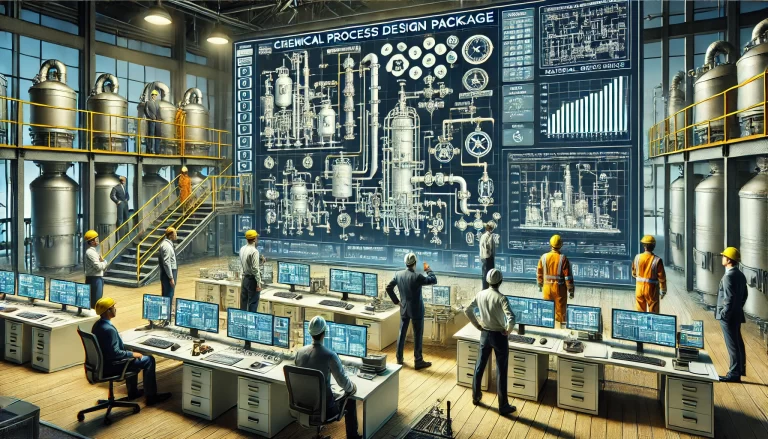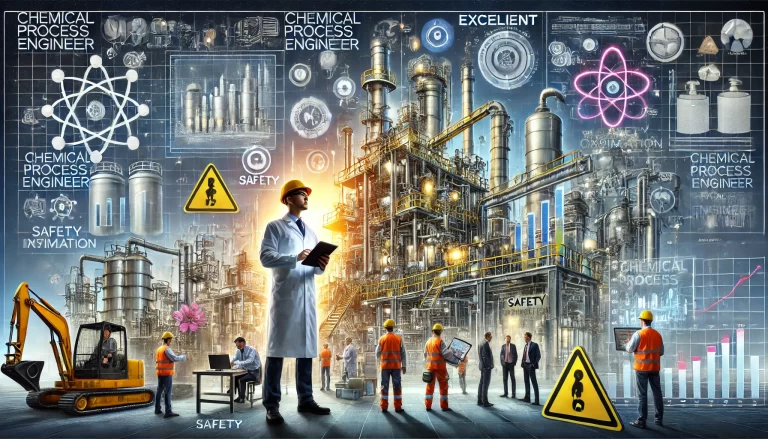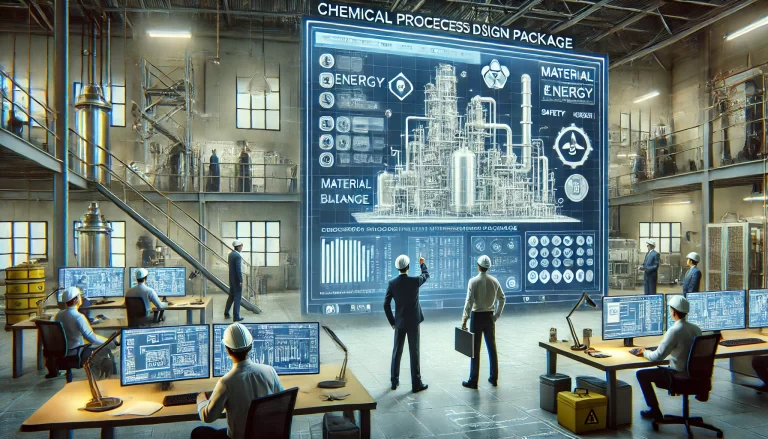In a chemical plant, instruments are essential for monitoring operational status. Their parameters are crucial for safe production and producing compliant products. Therefore, chemical instrument inspections are not merely routine tasks but essential checks for identifying hazards, reducing risks, and ensuring product quality. Without adequate inspections, complex chemical processes and high-speed equipment operations can result in frequent leaks, spills, and safety hazards, which could lead to significant financial losses for the company.

Main Objectives of Instrument Inspection
The primary objectives of instrument inspection are to:
- Detect any abnormalities in the instruments promptly.
- Prevent system shutdowns, accidents, and production of non-compliant products.
- Ensure stable production by promptly addressing any detected issues.
Although specific requirements vary by industry and process, the overall goal is to identify and address any abnormalities in production equipment to maintain stable operation.

General Guidelines for Instrument Inspection
- Personal Protective Equipment (PPE): Inspectors must use a three-in-one alarm device and wear necessary PPE to ensure personal safety.
- Clear Identification: All inspected instruments and equipment must have clear, correct, and identifiable labels.
- Pneumatic Control Valves: Check for air leaks in the air supply, inspect exterior parts for damage, ensure normal operation, and listen for abnormal sounds.
- Temperature Transmitters: Inspect seals in the enclosures and wiring boxes for aging, check for grounding issues or missing bolts, and ensure primary connections are leak-free.
- Pressure Transmitters: Verify the sealing of pressure transmitters and piping, ensure thermal insulation functions, and confirm no leaks in the pressure lines.
- Flow Meters: Confirm accuracy of flow meter readings, ensure insulation functions well (especially in winter), and check for leaks.
- Gas Detection Alarms: Ensure parts are intact, check that the display is clear and there are no power or display malfunctions.
- General Cleanliness: Ensure all instruments are clean and free from leaks, spills, or other issues.
- Scheduled Inspections: Follow inspection plans, adhere to specified times and locations, and complete tasks thoroughly.
- Standby Equipment: Perform daily inspections of standby equipment to ensure readiness.
- Compliance with Standards: Inspections must follow established guidelines and may be adjusted based on equipment conditions, focusing on high-risk and frequently malfunctioning areas.

Specific Inspection Requirements for Instruments and Control Systems
1. Pressure and Differential Pressure Transmitters
- Inspect the transmitter’s overall condition.
- Verify there are no leaks at connections.
- Check that measurements match those of nearby gauges.
- Confirm insulation and waterproofing, if applicable.
- Check for vibration hazards.
2. Pressure and Differential Pressure Switches
- Ensure switches are intact.
- Check for leaks at static seals.
- Confirm waterproofing and absence of vibration hazards.
- Ensure isolation, vent, and drain valves are correctly positioned.
3. Temperature Transmitters
- Verify the transmitter’s condition and waterproofing.
- Check for vibration hazards.
- Ensure displayed temperature matches local gauges.
4. Float-Type Level Transmitters
- Inspect for leaks at connections.
- Verify readings are consistent with other instruments.
- Confirm insulation and waterproofing (especially in winter).
5. Float-Type Level Switches
- Ensure switches are intact.
- Check for leaks and proper operation of isolation and drain valves.
- Confirm waterproofing and insulation.
6. Float Ball Level Transmitters
- Inspect transmitter condition and waterproofing.
- Check for leaks and ensure secure attachment of weights.
- Lubricate moving parts as needed.
7. Mass Flow Meters
- Ensure meter is intact, with no leaks.
- Verify insulation and check for vibration issues.
- Confirm alarm and measurement status are normal.
8. Vortex, Turbine, Electromagnetic Flow Meters
- Inspect for integrity, leaks, and waterproofing.
- Verify measurements fall within normal ranges.
9. Ultrasonic Flow Meters
- Check that meters are intact, waterproof, and securely mounted.
- Ensure normal operation and accurate measurements.
10. Control Valves
- Inspect valves and attachments for completeness.
- Check air supply pressure and ensure no leaks.
- Confirm that signals correspond to valve position.
11. Interlock Valves
- Ensure valves and accessories are intact.
- Check air supply pressure, waterproofing, and vibration.
- Confirm correct signal pressure for valve operation.
12. Interlock/Switch Valves
- Verify valve condition and secure fittings.
- Check for proper response to signal pressure.
- Inspect for leaks and secure connections.
13. Hydrogen Processing Interlock Valves
- Check the integrity and air supply pressure.
- Verify proper alignment of signal pressure with valve position.
14. Self-Regulating Control Valves
- Inspect for leaks, secure connections, and any vibration issues.
15. Radar Level Transmitters
- Verify proper operation of radar and associated displays.
- Check for leaks and accurate measurement within normal ranges.
16. Servo Level Transmitters
- Ensure that both transmitter and display are intact.
- Check for leaks and confirm accurate readings.
17. Gas Detection Transmitters (Flammable or Toxic)
- Confirm proper installation height and waterproofing.
- Verify accurate readings and check for alarm indications.
18. Online Analyzers
- Ensure analyzer is intact, with no leaks.
- Check that sample lines and pre-treatment units are insulated.
- Confirm readings are within normal ranges and alarms are absent.
19. RTUs (Remote Terminal Units)
- Ensure connections are secure, with no environmental risks.
- Confirm system operation and check for alarms.
20. Control Room and Cabinet Equipment
20.1 DC Power Supplies
- Check for normal operation of indicator lights and fans.
20.2 Power Switches and Circuit Breakers
- Confirm normal status and indicator lights.
20.3 Isolated Safety Barriers
- Check that power supply indicators show normal status.
20.4 Main Instrument Monitoring (BN3500 Series)
- Verify “OK” status lights on all channels.
20.5 Consoles and Cabinets
- Clean filters and ensure air flow.
- Confirm secure wiring and absence of debris.
21. Junction Boxes
- Ensure boxes are intact, with clear labels.
- Check waterproofing and secure connections.
22. Isolating Liquids and High-Pressure Oil Systems
- Confirm proper operation and normal liquid levels.
- Check for leaks and secure fittings.
23. Main Blower Instrumentation for Catalytic Units
- Inspect lubrication and verify normal readings for shaft temperature and displacement.
- Check for alarms and trend abnormalities.
24. Spare Main Blower Instrumentation for Catalytic Units
- Confirm normal operation of lubricated systems and monitor key parameters.
25. Compressor Instrumentation (Catalytic and Coking Units)
- Verify normal operation of lubrication, pressure, and vibration.
- Check all signal pressures and monitor for leaks.
26. Reciprocating Compressor Instrumentation (for Various Processing Units)
- Inspect connection tightness, vibration hazards, and consistent readings.
27. Screw Compressor Instrumentation (Vacuum, Gas Cabinets)
- Check for secure connections, monitor pressure consistency, and ensure proper operation.
28. Electro-Hydraulic Valve Control System
- Confirm normal operation of local displays, check for alarm indications, and verify secure connections.
29. Automatic Backwash Filter Control System
- Verify the system’s local display, check sealing conditions, and confirm leak-free signal lines.

Record Keeping and Compliance
Each inspection must be documented, specifying tasks and observations. Any issues or corrective actions should be recorded in detail. Inspections must strictly follow established guidelines but can be adjusted based on equipment conditions. Special attention should be given to high-risk areas and equipment prone to malfunctions, ensuring safe and stable operation.
